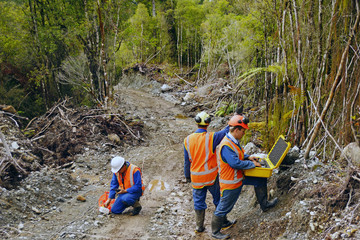
Geological surveys are performed to apprehend the composition, structure, and records of the Earth’s surface and subsurface. The technique generally involves numerous key steps:
Making plans and research: Before undertaking a geological survey, researchers gather present information and literature on the area of interest. This includes geological maps, previous research, satellite imagery, and any available geological reports.
Fieldwork: Fieldwork includes physically traveling the area to accumulate geological information. this will encompass mapping rock formations, accumulating rock samples, measuring geological systems (along with faults or folds), and recording other applicable observations. Fieldwork can be performed the usage of various equipment and techniques, together with GPS gadgets, geological hammers, compasses, and geological maps.
Geophysical Surveys: Geophysical methods, inclusive of seismic surveys, electromagnetic surveys, gravity surveys, and magnetic surveys, are often employed to accumulate records about subsurface geological systems and properties. these strategies can help discover underground features like mineral deposits, oil and gas reservoirs, groundwater resources, and geological risks.
Laboratory evaluation: As soon as subject records and samples are amassed, they’re analyzed in a laboratory to determine their composition, mineralogy, age, and different properties. various techniques, including petrographic microscopy, X-ray diffraction (XRD), X-ray fluorescence (XRF), and isotopic evaluation, are utilized in laboratory evaluation.
Information Interpretation and Mapping: Geological information collected from fieldwork and laboratory evaluation are interpreted to create geological maps, cross-sections, and models of the surveyed region. This includes integrating various varieties of data to recognize the geological history, structure, and capacity resources of the location.
Reporting and publication: The findings of the geological survey are compiled into reports and guides, which may be shared with government corporations, industries, academic institutions, and the general public. these reports often include distinctive descriptions of the geological characteristics of the place, in addition to tips for similarly observed or useful resource exploration.
What is the purpose of conducting a Geological Survey?
The Geological Survey serves numerous crucial functions in knowledge and handling the Earth’s resources and risks. in general, it conducts systematic research of the Earth’s geology, mapping out its functions, inclusive of rocks, minerals, fossils, and landforms. This record is beneficial for assessing natural resources like minerals, water, and energy reserves, helping in their sustainable extraction and management. moreover, the Geological Survey performs a critical position in identifying and mitigating geological dangers consisting of earthquakes, landslides, and volcanic eruptions, offering crucial facts for disaster preparedness and reaction efforts. through its research and mapping, the Geological Survey contributes significantly to scientific knowledge, environmental protection, and public safety.
Conclusion:
In conclusion, a geological survey is a systematic procedure that includes planning, fieldwork, data evaluation, interpretation, report writing, and dissemination of findings. It affords valuable insights into the Earth’s crust, assisting to understand geological hazards, natural resources, and environmental strategies.